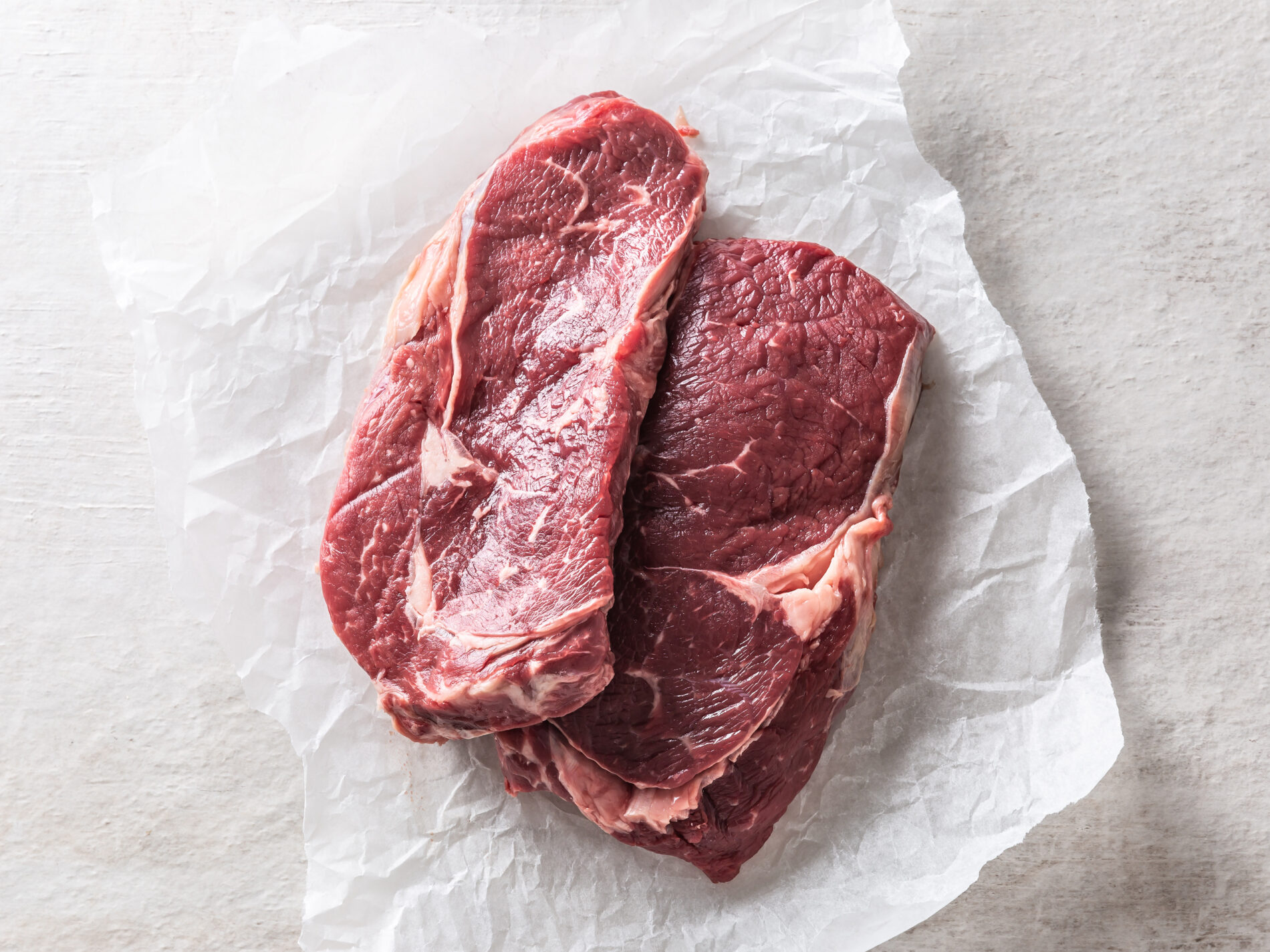Beef is a culinary name for meat that comes from cattle. It has been a part of humans’ diet since prehistoric times. Some cave drawings depicting hunting scenes are 17,000 years old.
Our ancestors valued bovine meat as it was highly nutritious and filling. This has incentivised humans to domesticate animals. Later, they bred them to improve meat quality and quantity.
Hence, beef consumed today is the result of a long selective process. That said, beef originally came from aurochs, predecessors of modern cows. This species has been extinct for almost 500 years.
The great choice of beef
Today we have many breeds explicitly grown for their meat quality.
Among them is the English horn, weighing a ton per animal. Then there is the Aberdeen Angus and Tajima. This kind of meat can fetch up to CHF 200 per pound on meat markets.
Undoubtedly, with this variety of meat, we are spoiled for choice when it comes to cooking.
Essential questions for cooking the perfect steak
Let’s look at the basics of preparing a perfect steak. It’s both straightforward and yet confusing.
- What cuts of meat to select?
- How big or small should a piece be?
- How long to cook it to achieve the desired level of doneness?
The different cuts of beef
First of all, we should be clear about the names of the cuts:
- Rib eye (Ribeye) cut has the most fat in it.
- Sirloin cut also has fat but tends to be thinner, resembling veins rather than chunks.
- The leanest and hence most expensive cut of meat is called a fillet.
Although fillet steak tends to be softer, sirloin and rib eye cuts are more flavoursome and juicy.
Prepare a steak full of juice and flavour
Before you cook a steak, take the meat out of the fridge and let it rest at room temperature for 45 minutes at least.
You can season your meat with salt for up to 2 hours before frying. This doesn’t affect the moisture level of the piece, contrary to the common myth. It actually helps the meat to absorb salt evenly.
Sprinkle some coarse pepper just before frying.
Place a heavy-based frying pan on high heat and add some sunflower oil. Add a knob of butter halfway through the cooking for basting the meat while on the stove. It will create the perfect crust, keeping the middle juicy and flavoursome.
Depending on how pink you like your meat, these are the cooking options for you.
- “Blue” (as raw as it gets)
- “rare”
- “medium-rare”
- “medium”
- “medium-well”
- “well-done”
The steak’s doneness is measured by inserting a thermometer after the meat has been cooked, which we will discuss now.
The different frying times for beef fillet, rib eye or sirloin
Let’s pick a 3,5 cm / 1,5-inch thick fillet and a 2 cm / 1-inch rib eye or sirloin.
- For a piece of “blue” steak, fry the fillet for 1,5 minutes on each side, and the rib eye / sirloin for just 1 minute on each side. Only the edges will cook, staying raw and purple inside. The temperature inside the stake should not exceed 115° F / 45° C.
- Suppose you like it “rare”: fry the fillet cut for 2 minutes on each side, and sirloin / rib eye for 1,5 minutes. The meat’s cooking temperature should be 120°-130° F / 50°-55° C.
- For the “medium-rare” fillet steak, keep frying for 3 minutes on each side, and the rib eye / sirloin- for 2 minutes, achieving 130°-135° F / 54°-57° C.
- Extend your time to 4,5 minutes on each side for a “medium” cooked fillet and 2,5 minutes for the rib eye / sirloin. The temperature inside the stake is 140°-150° F / 60°-65° C. If you fry the fillet any longer, it becomes a bit dry. That’s why most chefs will stop here.
- For the rib eye and sirloin, fry for 4-5 minutes on each side to achieve a “well-done” steak with an internal temperature of 155°-160° F / 68°-70° C.











What do you think?